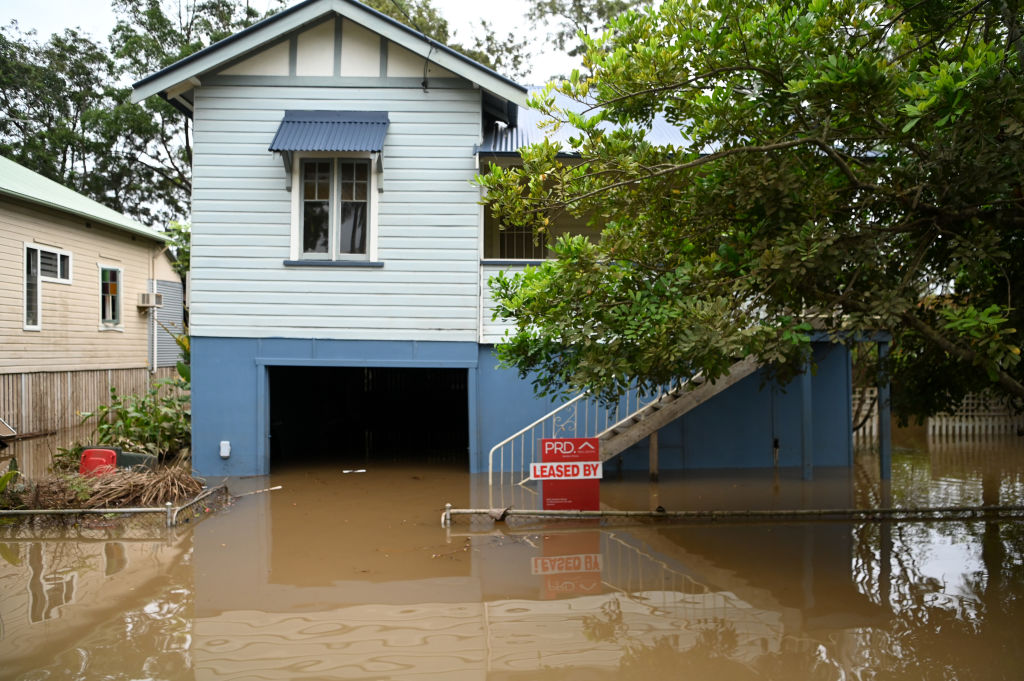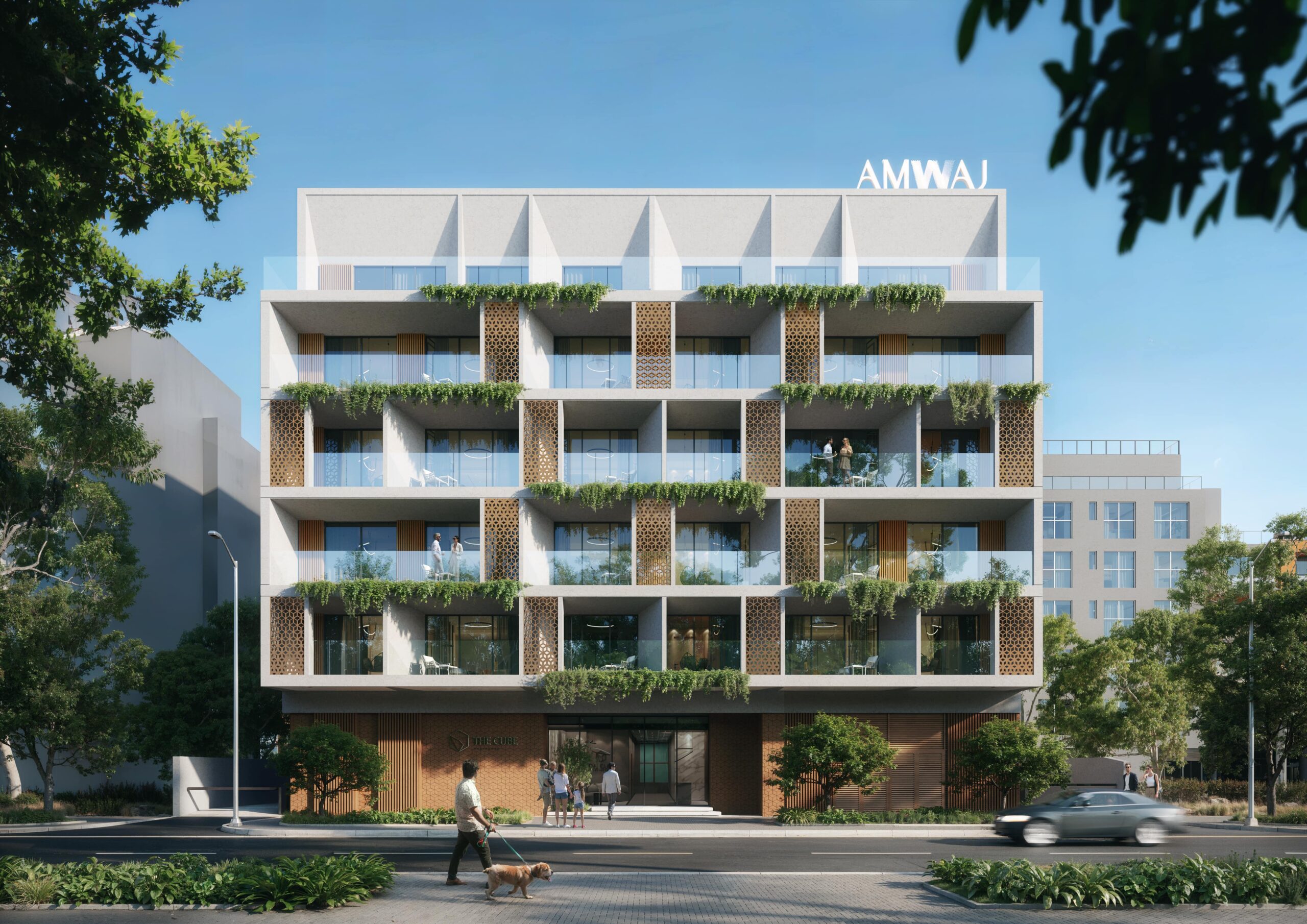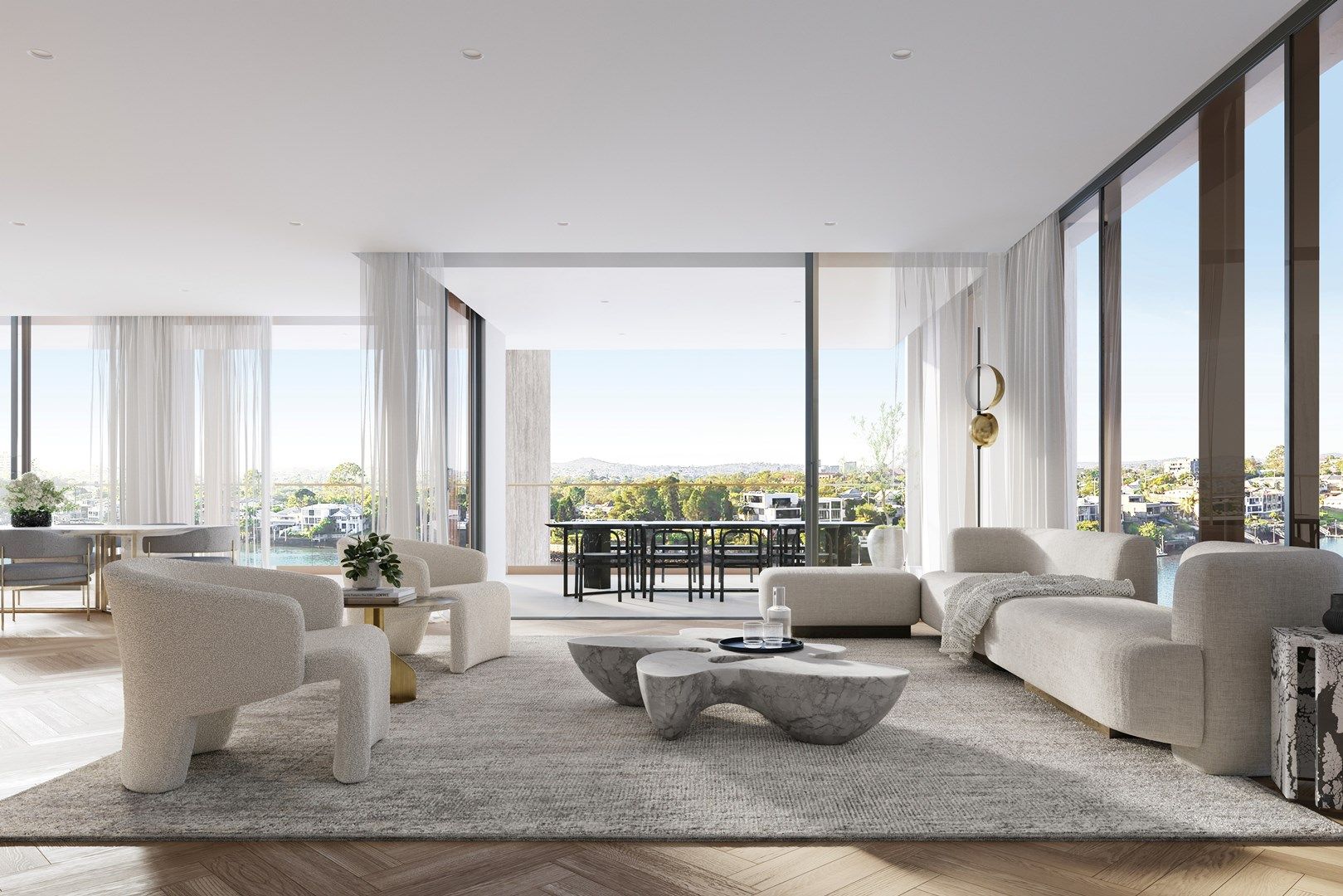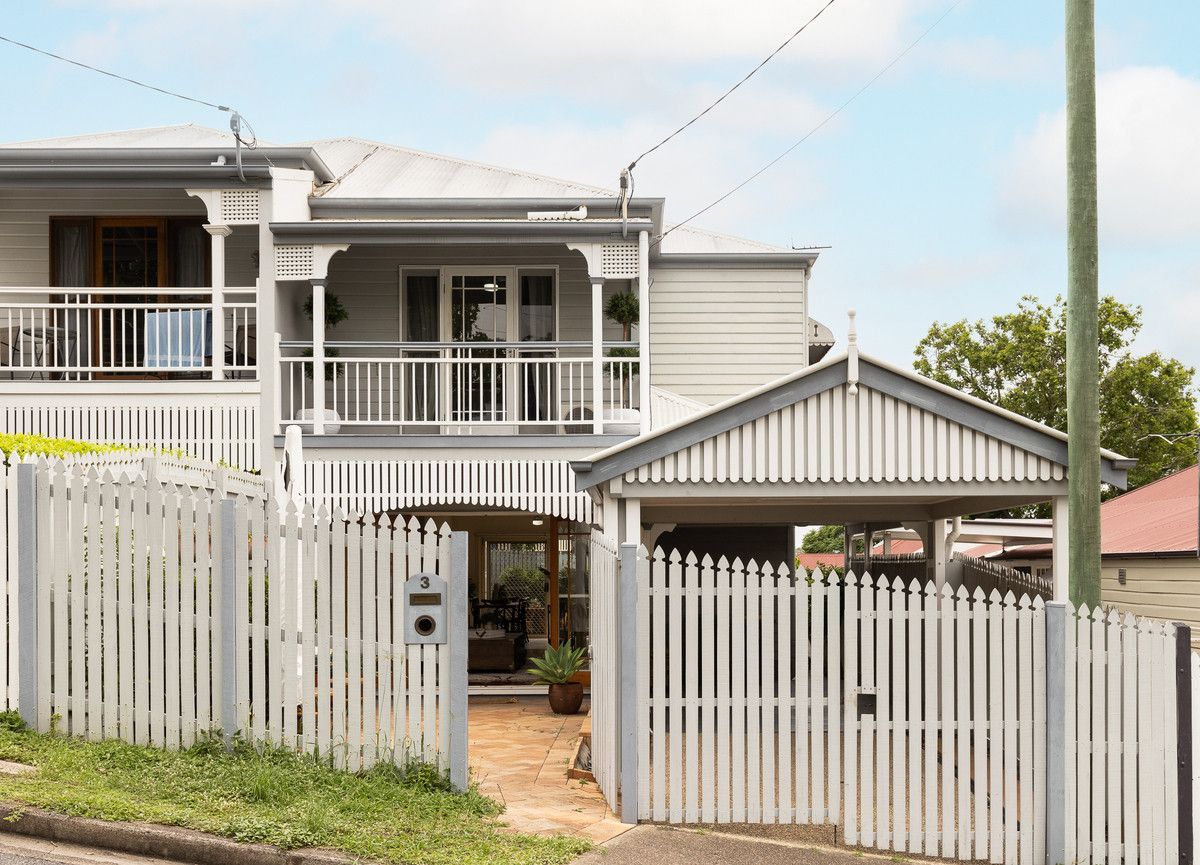How to Play the Property Meltdown in Five Charts
Savvy buyers made a fortune after the 2008 crash, picking up real estate at distressed prices. Investors hoping to spot bargains in the latest slump can watch these trends.
Is the pain over yet for U.S. commercial real estate? The answer might be yes for stocks but no for the assets they own.
A record $205.5 billion of cash is earmarked for investment in U.S. commercial real estate, according to dry-powder data from Preqin. But good deals may not be available for another six to 12 months. Here are some trends investors can watch for signs of when it is the right time to buy.
How Much Are Values Down Already?
U.S. commercial property prices have fallen 16% on average since their peaks in March 2022, according to real-estate research firm Green Street. Unlike the 2008 crisis, when a lack of credit hurt the value of all real estate, today’s downturn has hit some types of properties much harder than others.
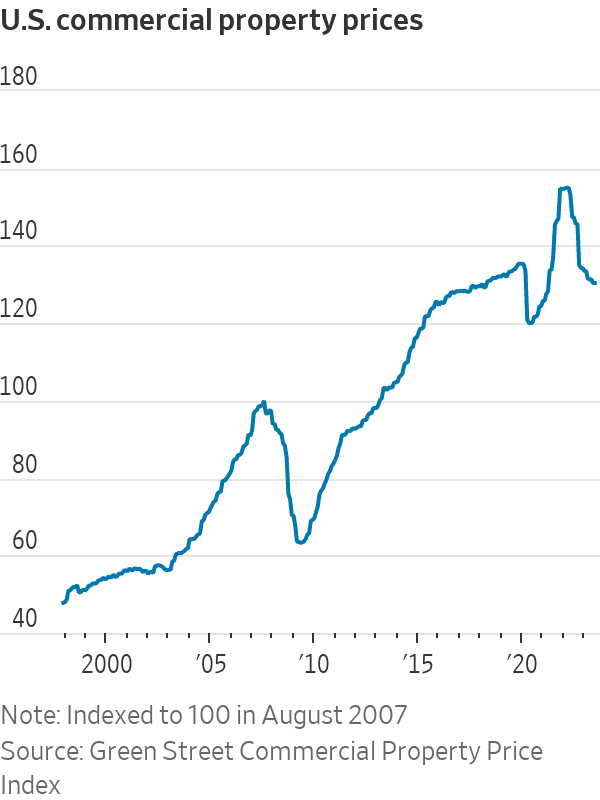
Unsurprisingly given remote working, offices are the worst performers, having lost 31% of their value since the Fed first began raising interest rates. The discount isn’t as enticing as it sounds, as troubled buildings need heavy investment to bring them up to a standard that will attract tenants, or to be redeveloped for new uses.
Meanwhile, prospects for snapping up America’s e-commerce warehouses at knockdown prices look slim. Warehouse values are down just 8% from peaks to reflect higher financing costs, and top industrial stocks like Prologis don’t look cheap either, trading close to net asset value.
Apartments might be a better bet for those hunting for distressed assets. Prices for multifamily apartment buildings have fallen by a fifth since March 2022. Some owners who paid top dollar for properties during the pandemic using short-term, floating-rate debt may be forced to sell if mortgage repayments become unmanageable when their interest rate hedges expire.
Property Sellers Are Still Demanding Yesterday’s Prices
Sellers are holding out for prices that are no longer realistic. MSCI’s bid-ask spread reflects the difference between what U.S. property owners are asking for and what buyers are willing to pay.

As of July, the gap for multifamily apartments was 11%, the widest it has been since early 2012, when the property market was still recovering from the 2008 crash. The gap for office and retail is a bit narrower at around 8%. Price expectations are closest for industrial warehouses, where sellers want just 2% more than buyers are willing to pay.
The market will be sluggish until one side caves. In the second quarter of 2023, investment in U.S. commercial real estate was down 64% compared with a year earlier, according to data from CBRE.
As the bid-ask gap narrows, it will signal that valuations are approaching more sustainable levels. But this will take some time. It was five years after the 2008 crash before buyers and sellers saw eye to eye on prices on the hardest-hit assets like apartments—although the adjustment should be much faster this time.
What Could Force Sellers to Slash Prices?
The number of properties that slip into distress will be key for bargain-hunters.
So far, there haven’t been many forced sales. Only 2.8% of all office deals in the U.S. in the second quarter were distressed, according to MSCI.
This may be because loans haven’t matured yet. “Owners don’t want to take a loss but once there are refinancing issues, they will have that come-to-Jesus moment with lenders,” says Jim Costello, chief economist at MSCI Real Assets.
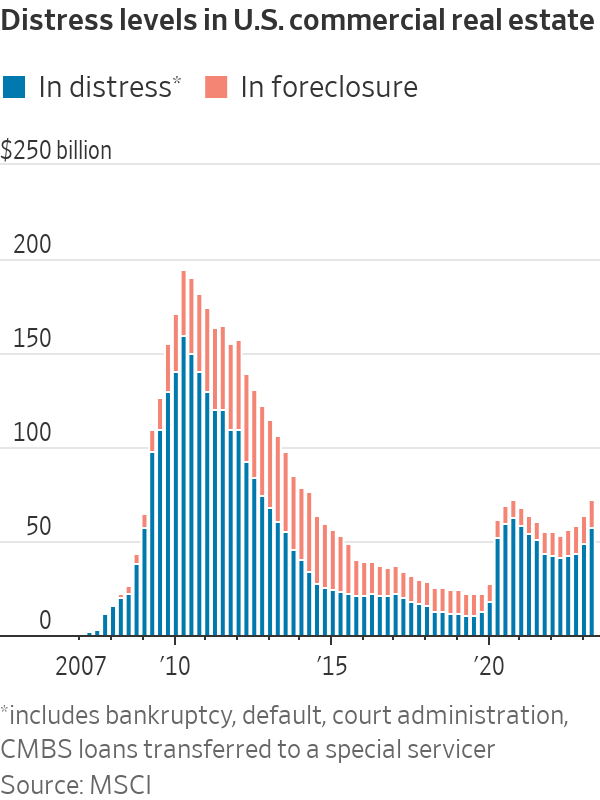
Even if forced sales are still rare, the value of U.S. property in distress—in default or special servicing—is rising. In the second quarter, an additional $8 billion of assets got into distress, bringing the total to $71.8 billion, according to MSCI. Including properties that look at risk, the pool of potentially troubled assets is more than double this amount.
Investment-grade corporate bond yields suggest that property prices have further to fall
Owning commercial property is a bit like owning a corporate bond, only slightly riskier: You bet on the solvency of a tenant, with more uncertainty about the value of the capital you’ll get back. For at least the past 20 years, investors in U.S. real estate have required a return premium of 1.9 percentage points over the yield on investment-grade corporate debt, according to Green Street’s director of research, Cedrik Lachance.
Right now, real estate only offers a 1.3 percentage point premium. For the relationship to return to normal and make property attractive again, U.S. real-estate prices need to fall a further 10% to 15%.
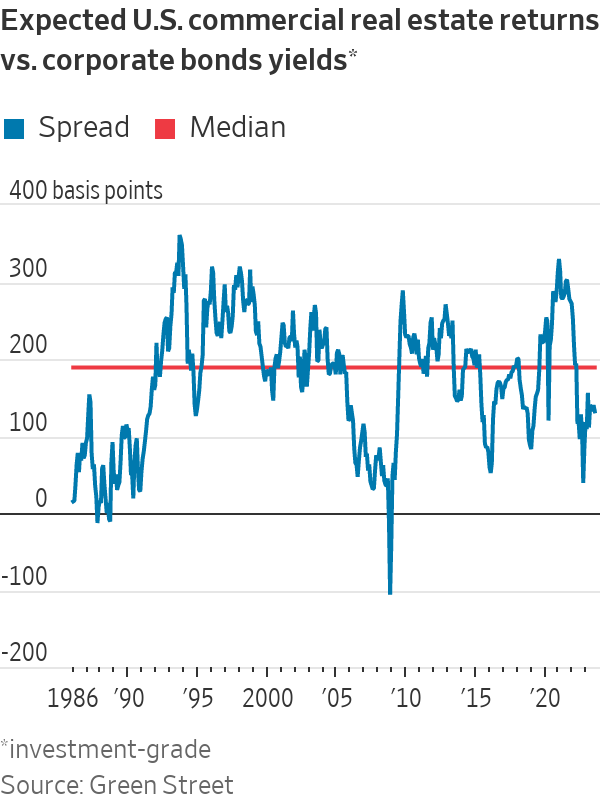
The share prices of listed property companies also point to further falls
Publicly traded real-estate stocks provide a live read of sentiment toward property markets. In the U.S., listed property companies currently trade at a 10% discount to gross asset values, based on Green Street data. This is a good proxy for the size of the price falls that investors still expect in private real-estate values.
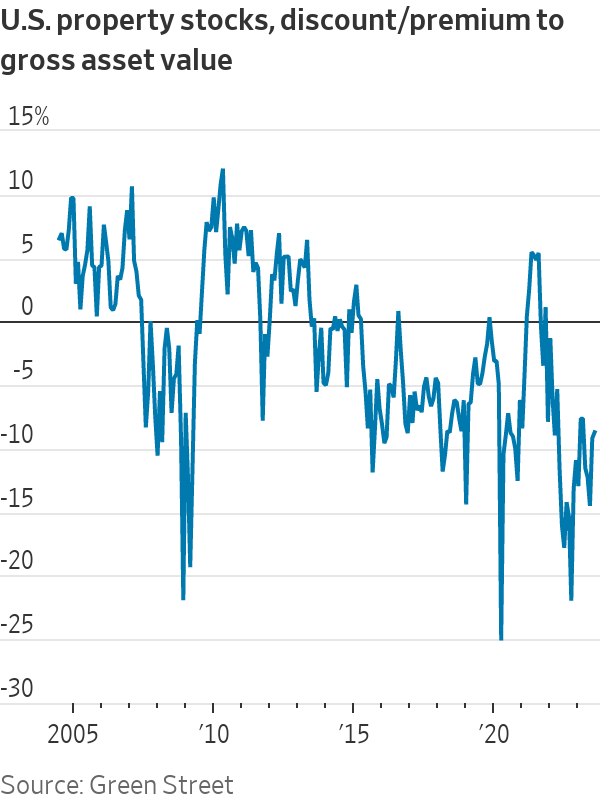
Investors can also keep an eye on property stocks for signs of improvement. “Listed real estate is a leading indicator for private in downturns and also recoveries,” says Rich Hill, head of real estate strategy and research at Cohen & Steers, who points out that there are already green shoots. At the end of June, REITs had risen in value for three consecutive quarters and were 13% above their lowest point in the third quarter of last year. Based on how long it usually takes for a recovery to feed through to the private market, property values could hit the bottom within six to 12 months.
All this suggests the best strategy is to buy property stocks but to wait to purchase physical real estate. “If you want to bottom fish in real estate now, do it in the public markets,” says Green Street’s Lachance.
 Copyright 2020, Dow Jones & Company, Inc. All Rights Reserved Worldwide. LEARN MORE
Copyright 2020, Dow Jones & Company, Inc. All Rights Reserved Worldwide. LEARN MORE
Set between Núi Chúa National Park and Vinh Hy Bay, Amanoi’s new Ocean Pool Residence combines privacy, wellness and luxury in one of Vietnam’s most untouched coastal settings.
From 24–27 Sept 2025, the Monaco Yacht Show will bring 120+ superyachts, 560+ exhibitors, and the world’s yachting elite to Port Hercule — with The Superyacht People joining to showcase stories, innovation, and the lifestyle behind luxury at sea.
Dubai hosts DATE MENA on 26–27 Nov 2025, uniting global leaders to explore how human potential meets digital possibilities — before the series moves to Riyadh on 8–9 Dec.
Turkish Airlines will add 75 Boeing 787s and up to 150 737 MAX jets as part of its Vision 2033 to expand beyond 800 aircraft. The deal boosts efficiency, long-haul capacity, and reinforces Istanbul’s role as a global hub.
Flying to more countries than any other airline worldwide, Turkish Airlines is taking another significant step forward in line with its strategic growth plans.
The national flag carrier has reached an agreement with Boeing, and will add a total of 75 wide-body Boeing 787-9 and 787-10 aircraft to its fleet between 2029 and 2034, consisting of 50 firm and 25 option orders within this scope.
In terms of engine procurement, Turkish Airlines is continuing negotiations with manufacturers Rolls-Royce and GE Aerospace. Within the scope of this strategic acquisition, negotiations between Turkish Airlines and Boeing regarding the purchase of a total of 150 aircraft, consisting of 100 firm and 50 option orders for the 737-8/10 MAX models have been completed. Subject to the successful conclusion of ongoing discussions with engine manufacturer CFM International, orders for the 737-8/10 MAX aircraft will be placed.
This agreement stands as a strong indicator of both the strategic partnership between Türkiye and the United States, as well as the long-standing cooperation between Turkish Airlines and Boeing. It also underscores the airline’s determination to maintain industry leadership and enhance operational efficiency.
As part of its “Vision 2033” which underscores airline’s 100th anniversary, Turkish Airlines aims to expand its fleet beyond 800 aircraft, while increasing the proportion of next-generation aircraft to 90% by 2033 and to 100% by 2035. This will further strengthen operational efficiency while sustaining an average annual growth rate of 6%.
On this new order, Turkish Airlines Chairman of the Board and the Executive Committee, Prof. Ahmet Bolat stated: “This landmark agreement represents much more than a fleet growth. It is a reflection of our leadership in the industry as well as our dedication to innovation and operational excellence. The addition of these advanced Boeing aircraft to our fleet will not only enhance our operational capabilities but also become a significant element supporting Turkish Airlines’ 2033 Vision of expanding our fleet to 800 aircraft.
With this agreement, while advancing our close collaboration with the world’s leading aircraft manufacturers, we will continue to support the development of Türkiye’s aviation ecosystem. Moreover, by offering greater connectivity and more long-haul destinations, these aircraft will help attract more visitors to discover our country’s unique cultural heritage and natural beauty, thereby further strengthening Türkiye’s tourism sector. Turkish Airlines, with its unparalleled service approach and unrivalled flight network, will also continue to set the global benchmark in both efficiency and environmental responsibility.”
Boeing Commercial Airplanes President and CEO Stephanie Pope stated: “We are honored that Turkish Airlines has once again chosen the 787 Dreamliner and 737 MAX to power its future growth. As a proud partner to Türkiye and the Turkish aviation industry for 80 years, we look forward to continuing our support of Turkish Airlines as they expand operations and deliver exceptional experiences to their passengers.”
Turkish Airlines operates more than 200 Boeing aircraft, among them 787-9, 777, 737 MAX, Next-Generation 737 and 777 Freighters. With this agreement, the carrier will soon introduce the largest member of the 787 family, the 787-10. Addition of these new Dreamliners will reduce operating costs with their 25% fuel efficiency advantage while increasing both passenger and cargo capacity, thus supporting high-demand routes particularly across the United States, Africa, Southeast Asia, and the Middle East.
While the expansion of the 787 Dreamliner fleet will strengthen Turkish Airlines’ long-haul capabilities, the 737 MAX aircraft will enhance efficiency and flexibility on short- and medium-haul routes. At the same time, their advanced cargo capacity and operational versatility will further reinforce Istanbul’s role as a strategic hub for both passenger and cargo transport.
Turkish Airlines continues to lead the way in the aviation industry, consistently delivering unparalleled service and unforgettable experiences above the clouds to its guests. This acquisition reinforces the airline’s commitment to offering travelers the most comfortable travel options available.
Chris Dixon, a partner who led the charge, says he has a ‘very long-term horizon’
Americans now think they need at least $1.25 million for retirement, a 20% increase from a year ago, according to a survey by Northwestern Mutual
UAE President Sheikh Mohammed bin Zayed met OpenAI CEO Sam Altman in Abu Dhabi to discuss expanding cooperation in AI research and applications. The talks align with the UAE’s push to build a global AI hub, including a massive data center, an Arabic-language AI model, and a new U.S.-backed AI campus.
The president of the United Arab Emirates, which has been spending billions in its push to become a global player in AI, met OpenAI Chief Executive Sam Altman in Abu Dhabi on Saturday, the UAE state news agency reported.
Discussions between Sheikh Mohammed bin Zayed Al Nahyan and Altman focused on strengthening cooperation between OpenAI and its counterparts in the UAE, particularly in the field of artificial intelligence research and its practical applications, the state news agency said.
“This cooperation aligns with the UAE’s ambition to establish an integrated AI ecosystem, supporting the country’s development plans and its drive to build a knowledge-based economy,” the agency added.
The UAE, a major oil exporter, is building one of the world’s largest AI data centers and launching a new Arabic-language AI model.
It has also been looking to leverage its strong relations with the United States to secure access to AI technology.
In May, the UAE and the U.S. signed an agreement for the Gulf state to build one of the largest artificial intelligence campuses outside the U.S. The deal was announced during President Donald Trump’s visit to Abu Dhabi.
Chris Dixon, a partner who led the charge, says he has a ‘very long-term horizon’
Interior designer Thomas Hamel on where it goes wrong in so many homes.
Lamborghini ended the GT World Challenge Europe Sprint Cup in Valencia with a win and second place, finishing runner-up in the championship.
Lamborghini claimed victory and a second place in the final round of the GT World Challenge Europe Sprint Cup season at Valencia, but just missed out on taking the title at the end of a pulsating weekend in Spain.
The duo, at the wheel of the #63 Lamborghini Huracán GT3 EVO2, avoided drama on a chaotic opening lap in Saturday’s race one, eventually consolidating fifth place – and first of the Pro class runners – ahead of the pit-stops.
Pepper took over from Engstler and made a late-race overtake to grab second place on the road which then became victory after a post-race penalty for the on-the-road winning Ferrari. It is Lamborghini’s 197th victory with the Huracán GT3 car which debuted in 2015 and which will be replaced by the all-new Temerario GT3 in 2026.
Coming into the weekend, the Pepper-Engstler combination sat fifth in the Sprint Cup standings, 20 points off the top of the table, knowing that a strong result would be key to keep their title hopes alive. The #63 qualified a promising sixth on the grid for race one, with Engstler maintaining that position either side of an early safety car.
From the restart, Engstler kept the #63 at the head of the Pro class cars in sixth, moving up a position just before the pit window opened before swapping with Pepper for the second stint. From there, the #63 began to move past the Bronze class cars which had led early on, settling into third before closing in on the second-placed McLaren.
Pepper, still leading the Pro class, was keen for more and finally translated pressure into an overtake to wrestle second place with just over a minute remaining. Scoring maximum points in Pro and second on the road, Pepper and Engstler were then promoted to overall race victors following a converted drive through penalty for the original winners.
Pepper took pole position for the final race of the year on Sunday morning and led the way off the rolling start. The #63 struggled for ultimate pace, however, and dropped behind the points-leading BMW just before the mandatory pit-stop.
Engstler kept the #63 in second after the stops and began to chase down the leader entering the closing stages. The German reduced the deficit to under a second but came up just short. By finishing second, Pepper and Engstler confirmed their place as runner-up in the Sprint Cup standings, vaulting three places from their pre-weekend position.
Chris Dixon, a partner who led the charge, says he has a ‘very long-term horizon’
Following the devastation of recent flooding, experts are urging government intervention to drive the cessation of building in areas at risk.
Set between Núi Chúa National Park and Vinh Hy Bay, Amanoi’s new Ocean Pool Residence combines privacy, wellness and luxury in one of Vietnam’s most untouched coastal settings.
Aman has unveiled its first Ocean Pool Residence at Amanoi, the resort’s coastal sanctuary in Vietnam.
Nestled between Núi Chúa National Park and Vinh Hy Bay, the villa extends the brand’s tradition of creating intimate, exclusive retreats that offer a complete escape from the outside world.
Perched above a pristine stretch of golden sand, the 925-square-metre residence can be configured as two or three bedrooms.
Designed for families and groups seeking privacy and reconnection, the home features expansive interiors including an open kitchen, wine cellar and living room flowing onto a vast sundeck with panoramic ocean views.
An alfresco dining sala serves as a hub for entertaining, while two swimming pools, one a large central pool, invite relaxation with the ocean as a backdrop. Direct access to a private beach completes the setting.
Wellness is central to the experience. The villa is equipped with a private spa house featuring a double treatment room, steam room, sauna, outdoor Jacuzzi, ice-bucket shower and tranquil lounge.
Daily 90-minute spa treatments by Aman’s expert therapists are included for each guest, underscoring the brand’s focus on wellbeing.
Guests of the Ocean Pool Residence also receive exclusive benefits. These include a private barbecue or set dinner, a two-hour catamaran cruise across Vinh Hy Bay, 24-hour butler service, use of a private residence buggy, and a fully stocked minibar.
Daily breakfast and round-trip transfers from Cam Ranh Airport are included for stays of two nights or more.
Beyond the villa, Amanoi offers a wide range of land and sea adventures. Guests can take guided treks and bike rides through Núi Chúa National Park, snorkel in the bay, or head out on the water by kayak, Hobie Cat or stand-up paddleboard. For younger travellers, the resort runs a dedicated programme with fishing lessons, cookery classes, and arts and crafts.
The wider resort facilities include the lakeside Aman Spa, a hilltop infinity pool, and a central pavilion housing a restaurant, bar and library, along with the Beach Club. Together, they create a retreat that balances privacy with community.
According to Aman, the Ocean Pool Residence “offers all the comfort and reassurance of a private home in one of Vietnam’s most untouched coastal settings.”
Chris Dixon, a partner who led the charge, says he has a ‘very long-term horizon’
From 24–27 Sept 2025, the Monaco Yacht Show will bring 120+ superyachts, 560+ exhibitors, and the world’s yachting elite to Port Hercule — with The Superyacht People joining to showcase stories, innovation, and the lifestyle behind luxury at sea.
Each September, Port Hercule in Monaco transforms into the global stage for superyacht excellence. From 24–27 September 2025, the Monaco Yacht Show will bring together over 560 expert exhibitors, more than 120 superyachts, and 50 luxury tenders, all showcasing the cutting-edge in design, craftsmanship, and innovation that define the future of the yachting world.
This year, The Superyacht People will participate in the Monaco Yacht Show, joining the global community of industry leaders, yacht enthusiasts, and innovators who gather annually in Port Hercule.
With a distinctive approach that celebrates both the lifestyle and the people behind superyachting, The Superyacht People’s presence at MYS 2025 reflects their commitment to shaping conversations, forging connections, and showcasing the evolving culture of luxury at sea.
What to Expect from Monaco Yacht Show 2025
- Diverse Exhibitor Spaces: The Show includes dedicated zones like the Yacht Design & Innovation Hub, Dockside Area, Sailing Yacht Area, and the Blue Wake™ zone — each focusing on innovation, sustainability, and next-generation luxury.
- Superyachts & Tenders on Display: From flagship superyachts available for charter or purchase, to sleek tenders poised for sea adventures — there’s a wide range to explore.
- Experiential Programming: The Show isn’t just about looking — it’s about experiencing. Attendees can expect grand opening events, panel discussions (including at the Monaco Yacht Summit), awards (Blue Wake™ Awards), a photographic exhibition, and more.
- Environmental & Innovation Focus: With the Yacht Design & Innovation Hub and Blue Wake™ segments, Monaco is doubling down this year on sustainable solutions and responsible yachting.
The Superyacht People’s Role at Monaco Yacht Show 2025
For The Superyacht People, participating in this year’s Monaco Yacht Show is about more than showcasing yachts — it is about representing a lifestyle and a community built on passion, innovation, and connection. Their presence will highlight:
- Active engagement across the show, from dockside gatherings to industry discussions, reinforcing their role as connectors within the global superyacht community.
- A lifestyle-driven perspective, celebrating the people, culture, and unique experiences that surround superyachting — not only the vessels themselves.
- Showcasing innovation and sustainability, aligning with Monaco’s growing focus on responsible yachting and forward-thinking design.
Through their participation, The Superyacht People aim to spotlight the evolving identity of the industry — where luxury meets authenticity, and where human stories remain at the heart of every superyacht journey.
Why This Matters
The Monaco Yacht Show remains unmatched in prestige and scale. It is one of the most influential gatherings in the superyacht world, shaping trends in yacht design, marine technology, and luxury experiences. For brands and content creators alike, visibility at Monaco can only enhance reach, credibility, and influence in this highly specialized market.
With The Superyacht People on board, audiences can expect not just coverage, but storytelling — stories that bridge glamour with substance, spectacle with authenticity.
Chris Dixon, a partner who led the charge, says he has a ‘very long-term horizon’
Dubai hosts DATE MENA on 26–27 Nov 2025, uniting global leaders to explore how human potential meets digital possibilities — before the series moves to Riyadh on 8–9 Dec.
Dubai is set to host one of the most anticipated tech events of the year as DATE (Digital Acceleration & Transformation Expo) makes its debut in the city on 26–27 November 2025, followed by DATE KSA on 8-9 December in Riyadh.
Part of the flagship DATE series by Trescon, a global business catalyst, the MENA edition will bring together 2,000+ decision-makers, 200+ investors, 60+ speakers, and 50+ tech companies for two days of dialogue, deal-making, and innovation. The event is co-located with Trescon’s CARE (Climate Action & Renewable Energy) series.
“Dubai is setting the pace for the next wave of tech-driven transformation and DATE MENA is at the heart of it,” said Mohammed Saleem, Founder and Chairman, Trescon.
Centred on the theme “Human Potential Meets Digital Possibilities,” the series will explore how emerging technologies can drive impact across sectors.
The recently concluded DATE Dialogues, held on 16 September at in5 Tech, Dubai, focused on MENA’s digital transformation and future-tech adoption strategies. Contributions from NVIDIA, Accenture, The Kanoo Group, and Magure highlighted the importance of collaboration and local expertise, setting the stage for DATE MENA.
Vladimir Arshinov, Group Chief Technology Officer, EMSTEEL, said: “DATE MENA provides an ideal platform to exchange insights with global leaders and demonstrate how human potential can truly meet digital possibilities — shaping the region’s digital future.”
DATE will also spotlight women in tech.
Alice Yammine Boueiz, Chief Executive Officer, Arab Hospitals Federation, added: “Emerging technologies are opening a new chapter for the MENA region, redefining healthcare and the way we serve our people. Through my role as CEO of the Arab Hospitals Federation, I am proud to bring this vision to DATE, where together we turn ambition into transformation.”
Prominent speakers include Dr. Marwan Al Zarouni, CEO of AI, Department of Economy and Tourism (DET), UAE; Dr. Ayesha Bin Lootah, Assistant Vice President, VARA, UAE; H.E. Paul Dawalibi, CEO, RAK DAO, UAE; Dr. Sid Ahmed Benraouane, Advisor, Dubai Government, and others.
Each edition of DATE will host the FutureTech World Cup, Innovation Programme, Launchpad, and Jobs initiative, connecting talent with companies shaping MENA’s digital-first economy.
Industry partners that have committed to showcase their projects/solutions during DATE MENA include Magure, EY, Demandify, KonfHub, Fia Ventures, Trescon Foundation, and others. View the full list of speakers here and the event agenda here.
“DATE is not a one-off event, it’s a catalyst,” said Naveen Bharadwaj, Group CEO, Trescon. “This platform is built for those who are serious about using technology to solve real problems. In Dubai, we’re creating the space where policy meets capital, and ideas become action.”
With Dubai advancing its D33 economic agenda and doubling down on AI-led innovation, DATE arrives at a pivotal moment for the region.
Chris Dixon, a partner who led the charge, says he has a ‘very long-term horizon’
One vision. Three destinations. Infinite impact. A pioneering platform uniting global leaders, innovators, and changemakers to drive real progress in sustainability, clean energy, and climate action. This landmark event is where the future of climate tech, green finance, and renewable energy will be shaped.
As the Middle East and North Africa (MENA) region faces escalating environmental challenges, the urgency for actionable climate solutions has never been greater. In response, Trescon, a global business catalyst and events firm, introduces CARE — a transformative global platform designed to accelerate climate action, renewable energy adoption, and sustainable development across the region.
What is CARE
Climate Action & Renewable Energy (CARE) is a high-impact summit series aimed at bridging the gap between climate challenges and actionable solutions. The MENA edition is scheduled for 26–27 November 2025 in Dubai, followed by the KSA edition on 8-9 December in Riyadh, and CARE India in February 2026. Each edition will bring together 2,000+ attendees, 200+ investors, and 75+ speakers from 30+ countries.
CARE serves as a dynamic platform for policymakers, business leaders, innovators, and investors to collaborate on climate solutions, share knowledge, and build partnerships that drive sustainable change.
Why CARE matters
The MENA region is at a critical juncture, with rapid urbanization, resource constraints, and climate vulnerabilities posing significant challenges. The CARE Summit addresses these issues by focusing on key areas:
- Climate action & decarbonization: Strategies to reduce emissions and enhance climate resilience.
- Sustainable finance & ESG: Promoting responsible investment and ethical governance.
- Renewable energy & CleanTech: Advancing solar, wind, hydrogen, and next-gen clean energy innovations.
- Sustainable cities & infrastructure: Building resilient, smart, and eco-friendly urban environments.
- Water security & ocean conservation: Ensuring sustainable water resources and marine ecosystems.
By convening a diverse range of stakeholders, CARE fosters collaboration and innovation, driving the region toward a sustainable and resilient future.
The CARE Dialogues: A prelude to action
The journey to CARE began with the CARE Dialogues, an exclusive, invite-only session held in June 2025 in Dubai. Three high profile Dialogues have been conducted until now with each setting the stage for the upcoming summit, laying the groundwork for meaningful discussions and partnerships that will shape the future of sustainability in MENA. You can register for the latest CARE Dialogues here.
Looking ahead: The CARE Summit experience
CARE promises an immersive experience, featuring:
- High-Profile Keynotes: Insights from global leaders and visionaries.
- Panel Discussions & Workshops: In-depth explorations of pressing climate issues.
- Networking Opportunities: Connecting changemakers from across the globe.
- Innovation Showcases: Presentations of cutting-edge sustainable technologies.
- Climate Tech World Cup: Highlighting emerging solutions in climate tech.
- CARE Innovation Program: Showcasing young innovators developing sustainable solutions to real-world challenges.
- CARE Launchpad: Spotlighting disruptive sustainable innovations and research
Attendees will have the opportunity to engage with experts, share best practices, and collaborate on initiatives that drive tangible impact.
CARE aims to connect policymakers, innovators, investors, and business leaders around actionable climate solutions. If you are driving change in sustainability, renewable energy, or clean technology, CARE offers a platform to share, collaborate, and be part of the conversation.
Chris Dixon, a partner who led the charge, says he has a ‘very long-term horizon’
Whether you’re a start-up, clinic, investor, or global healthcare brand, Revive ME offers a launchpad to scale faster, connect deeper, and expand globally. Book your space now and place your brand at the forefront of a global longevity economy.
Revive ME, the Middle East’s pioneering conference and exhibition dedicated to longevity science, biotechnology, regenerative medicine, ultra-personalized wellness, and AI-powered healthcare innovation, is proud to announce the Department of Health (DOH), Abu Dhabi as a Supporting Partner. This strategic collaboration further elevates the event’s role in shaping the future of healthy longevity and healthcare innovation across the region.
Taking place on 26–27 November 2025 at Beach Rotana, Abu Dhabi, Revive ME is poised to attract over 1,500 industry leaders, 70+ sponsors and exhibitors, 85+ global speakers, and 700+ pioneering companies from across the health tech ecosystem.
With the Department of Health’s strategic support, the event reinforces its position as a key platform facilitating collaboration between policymakers, industry disruptors, clinical experts, investors, and researchers, all committed to advancing the UAE’s vision for health innovation and healthy longevity.
Expanded and Distinguished Speaker Lineup
Revive ME has further expanded its list of distinguished speakers, reflecting the depth and breadth of expertise expected at the event. Newly confirmed thought leaders include:
- Dr. Asma Al-Mannaei – Executive Director of Research and Innovation, Department of Health – Abu Dhabi
- Dr. Ramadan AlBlooshi – Senior Advisor to the Director General, Dubai Health Authority (DHA)
- H.E. Lucie Berger – Ambassador of the European Union to the United Arab Emirates
- Dimitris Moulavasilis – Group CEO, M42
- Dr. Richard Marshall – CEO, Juvenescence
- Dr. Alex Aliper – Co-Founder & President, Insilico Medicine
- Elena Bonfiglioli – Global Business Leader Healthcare, Pharma & Life Sciences
- Mohamed Nasser – VP General Manager, MEA, Amgen
- Alaa Adel AJ – Senior Vice President & General Manager, Oracle Health & Life Sciences International
- Dr. Bartlomiej Piechowski-Jozwiak – Head of Research, Institute of Healthier Living, Abu Dhabi
… and many more visionary leaders.
What to Expect
Over two transformative days, Revive ME will showcase the latest in longevity innovations, biotech breakthroughs, regenerative medicine solutions, AI-driven diagnostics, preventative health strategies, and precision wellness applications. Attendees will experience:
- Interactive technology demonstrations
- Product launches by industry pioneers
- Longevity startup showcases
- Immersive health innovation zones
The conference will feature high-impact keynotes, panel discussions, fireside chats, and innovation pitch sessions, spotlighting global breakthroughs, regional public health strategies, and future-ready healthcare models.
Be Part of the Future of Health Innovation
Don’t miss the opportunity to be part of the region’s foremost platform driving the future of healthy longevity, breakthrough biotech solutions, and transformative healthcare strategies. Whether you’re an industry leader, policymaker, investor, or innovative startup, Revive ME offers unmatched opportunities to connect, collaborate, and shape the future of health.
Secure your place today and be at the forefront of the global health tech revolution, register now.
Chris Dixon, a partner who led the charge, says he has a ‘very long-term horizon’
Because the climate transition demands action, collaboration, and innovation, not just conversations. Whether you’re leading change or investing in it, CARE is the place to be.
If you’ve been to enough climate events, you know the pattern. Big promises, inspiring speeches… and then? Not much changes.
CARE, Climate Action & Renewable Energy, is different.
Launching in Dubai (26–27 November 2025) followed by Riyadh (8–9 December 2025), CARE is where the MENA region’s climate commitments are matched with real, measurable outcomes. No endless panels for the sake of it. No talking in circles. CARE is built for connection, collaboration, and action.
- Because the climate clock isn’t slowing down: The urgency is real. MENA is facing rising temperatures, water scarcity, and an energy transition that can’t wait. CARE brings together the people who aren’t just aware of these challenges; they’re actively building the solutions. From clean energy innovators to government decision-makers and global investors, this is the room where change is accelerated.
- Because it’s MENA’s deal-ready platform for climate solutions: CARE isn’t another expo where you swap business cards and hope something happens later. Here, the conversations are targeted, the meetings are pre-qualified, and the opportunities are immediate. Government tenders, private sector investments, technology adoption — it all happens under one roof. MENA edition in Dubai will see a strong international and regional presence alongside UAE-led climate initiatives, while KSA’s edition taps into Saudi Arabia’s ambitious Vision 2030 sustainability agenda. Each location offers a unique mix of stakeholders, ensuring that the right people meet at the right time.
- Because nothing here is siloed: Climate action doesn’t work in isolation. CARE’s impactful pillars — from renewable energy and green mobility to water resilience and circular economies — are designed to break down barriers between industries. Energy players talk to urban planners. Mobility innovators meet investors in water solutions. The result? Cross-sector partnerships with deeper, longer-lasting impact.
- Because you’ll be in the right room: Ministers. C-suite leaders. Multilateral agencies. Sovereign wealth funds. Start-ups with breakthrough tech. These aren’t just names on a programme, they’re in the meetings, on the floor, and open to doing business. CARE’s curated environment ensures you’re speaking directly to people with the authority and resources to make decisions on the spot.
- Because the ClimateTech World Cup is happening here: One of CARE’s biggest draws is the ClimateTech World Cup, a high-energy competition spotlighting the most promising climate tech start-ups from around the globe. Finalists will pitch live to an audience of investors, policymakers, and industry leaders, all vying for funding, partnerships, and market access. It’s where bold ideas meet the backing they need to scale, and it all unfolds at CARE.
- Because you’ll leave with more than a brochure: Attendees walk away from CARE with signed MOUs, pilot project agreements, investment interest, policy insights, and partners they can actually work with. The event is structured to keep momentum going long after the closing session.
This is where MENA makes climate count
If you’re serious about climate action in the region — whether as a policymaker, corporate leader, entrepreneur, or investor — CARE is where you need to be.
CARE MENA: 26–27 November 2025, Madinat Jumeirah, Dubai
CARE KSA: 8–9 December 2025, JW Marriott, Riyadh
Book your tickets.
For more enquiries, click here.
Be part of the conversations, the deals, and the solutions shaping the region’s climate future.
Chris Dixon, a partner who led the charge, says he has a ‘very long-term horizon’
Visitor registrations are open for Retail Show 2025, happening Oct 7-8 at Radisson Hotel Riyadh Airport, bringing together industry leaders, policymakers, and innovators for two days of exhibitions, networking, and insights into Saudi Arabia’s fast-growing retail market projected to surpass $200B by 2028.
Visitor registrations are now open for the highly anticipated Retail Show 2025, taking place on Oct 07- 08, 2025 at the Radisson Hotel Riyadh Airport. Returning bigger than ever, this event will be the epicenter of retail innovation, bringing together the industry’s most influential voices for two days of exhibitions, strategic dialogue, and high-value networking.
The visitors will gain free access to world-class content, networking with industry decision makers and exploring the future of retail. With thousands of attendees, a world-class speaker lineup, and various exhibitors, Retail Show 2025 is the premier destination for discovering opportunities in Saudi Arabia’s booming retail sector. The Kingdom is on track to exceed $200 billion in retail market value by 2028, presenting a golden opportunity for global and regional players.
The exhibition floor at the Radisson Hotel Riyadh Airport will showcase cutting-edge technologies and solutions from leading companies including Quattrobi, Globant, ZULTEC, LinkMisr, DRB Logistic Solutions, Shark Shopfits Private Limited, TurnB Business Services, and more.
The conference program features exclusive insights from industry and government leaders. Confirmed organizations include Al Othaim Life Co., Namshi, DHL, MishiPay, Red Sea Global, Royal Commission for Riyadh City, Ministry of Economy & Planning, Adidas, Converse UAE, and many more.
Across two dynamic days at the Radisson Hotel Riyadh Airport, attendees will explore the latest trends in e-commerce, supply chain & logistics, AI-driven solutions, omnichannel strategies, sustainability, and Saudi Giga projects. Beyond the sessions, visitors will gain access to high-level networking with policymakers, investors, retailers, and innovators who are shaping the future of the retail landscape.
Chris Dixon, a partner who led the charge, says he has a ‘very long-term horizon’
CARE Dialogues brought together top sustainability leaders in the UAE to shape the agenda for CARE MENA 2025 in Dubai this November, focusing on ESG priorities, climate action, mobility, and circular energy systems.
CARE Dialogues, part of Trescon’s global climate action, renewable energy & sustainability event series, CARE, united top sustainability leaders, policymakers, and innovators from across the UAE to discuss ESG priorities, challenges, opportunities, and solutions to be covered during CARE MENA, taking place on November 26-27 at Madinat Jumeirah, Dubai.
Hosted by Supercool Mobility, Charging Interface Initiative (CharIN), and Global Education Energy Environment Organization, the Dialogues focused on sustainability policies, financing mechanisms, scalable solutions, mobility, circular energy systems — from generation and storage to intelligent reuse — and cross-sector energy transformation.
Talking about the CARE series, Naveen Bhardwaj, Group CEO of Trescon, said “Our CARE series in Dubai, Riyadh, and New Delhi unite the government, industry, academia, solution providers, investors, ClimateTech start-ups, and the wider community, as driving climate action and making sustainability consciously happen is a collective responsibility.” He continued “Focused group discussions during our Dialogues give the sustainability community an opportunity to help shape the main event’s agenda and make it fully outcome driven.”
Neutral Fuels, a UAE pioneer in biodiesel from recycled cooking oil, was also a part of the Dialogues. Talking about the opportunity, Charles Gardner, Chief Operations Officer, said, “It’s an honour to join the Care Dialogues and share how Neutral Fuels is shaping a sustainable future. By turning local waste cooking oil into biodiesel, we cut emissions and power the UAE’s fleets, locomotives, power generators and more. Switch the fuel, shift the future.”
Industry partners and solution providers that have committed to showcase their ESG & sustainability projects/solutions during CARE MENA include S&P Global – global leader in credit ratings and market intelligence; Emicool – UAE pioneer in sustainable district cooling; Supercool – specialist in lubricants, refrigerants, and HVAC solutions; emtribe – driving AI‑driven sustainability; Cero Hero – enabling carbon‑footprint reduction; Demandify – powering B2B demand generation; KonfHub – delivering seamless event ticketing and attendee engagement; Fia Ventures – backing early‑stage investments; Trescon Foundation – advancing health, education, and community development, and others.
Association Partners include STARFINDO, Kumpul Impact, DNIG, GH2 India, African Smart Cities Innovation Foundation, MESIA, Astrolabs, and ICIB.
Speakers at CARE MENA include:
- H.E. Dr. Abdullah Belhaif Al Nuaimi, Chairman of the Sharjah Consultative Council, Former UAE Minister of Climate Change and Environment, UAE
- H.E. Eng. Amal Abdulrahim, Assistant Undersecretary for Support Services Sector & CEO of Artificial Intelligence and Innovation, Ministry of Climate Change and Environment, UAE
- Gauri Singh, Deputy Director-General, International Renewable Energy Agency (IRENA), UAE
- Sven Deckers, Director of Sustainability, Dubai Airports, UAE
- Manosij Gangul, Group Chief Sustainability Officer, Aramex, UAE
- Rajesh Garg, Group Chief Financial Officer & Chief Sustainability Officer, Landmark Group, UAE
- Jaydeep Anand, Co-founder, Chief Development Officer & Chief Sustainability Officer, Five Holdings, UAE
- Nadia Boumeziout, Head of Sustainability & Information Governance, Middle East, Zurich Insurance, UAE
- Suzan Hamdy, Chief Sustainability & Sustainable Finance Officer, Banque Misr, Egypt
- Dr. Bassam Kaddissi, Chairman of the Arab Healthcare Sustainability Center, Arab Hospitals Federation, Lebanon, and others
Chris Dixon, a partner who led the charge, says he has a ‘very long-term horizon’
NetForChoice launches its UAE Data Center in Dubai, offering 99.95% uptime, advanced SOC & NOC services, and enterprise cloud solutions to empower GCC businesses with secure, scalable digital infrastructure.
NetForChoice, a global leader in IT hosting, web hosting, and cybersecurity, today announced the launch of its state-of-the-art UAE Data Center in Dubai. Engineered to deliver 99.95% uptime, the facility integrates advanced SOC services and enterprise-grade NOC services designed to empower regional businesses with secure, compliant, and scalable digital infrastructure.
A Strategic Milestone in Global Expansion
The opening of the UAE Data Center marks a new chapter in NetForChoice’s journey from its origins in India to becoming a trusted IT partner across the Gulf Cooperation Council (GCC) and global markets. With this milestone, NetForChoice strengthens its presence in the Middle East, providing web hosting with free domain services, enterprise-grade cloud, and UAE NOC solutions that meet the unique needs of modern businesses.
Mr. Ranveer Singh, CEO of NetForChoice, said: “For us, the UAE Data Center is about empowering businesses with trust, competence, and future-ready digital solutions like SOC services and enterprise grade NOC monitoring. Dubai has been at the crossroads of innovation, and with this data center, we offer customers the enterprise cloud foundation they need to scale quickly and efficiently”.
Key Features of the Dubai Data Center
- High Availability: 99.95% uptime for websites, email, ERP platforms, and AI workloads
- SOC Services UAE: Proactive threat detection, compliance support, and 24/7 monitoring
- NOC Services / UAE NOC: Seamless infrastructure management, monitoring, and incident response
- Enterprise Web Hosting & Free Domain Packages: Locally hosted for speed and compliance
- Cloud Hosting Models: Public, private, and hybrid tailored to enterprises
- Carrier-Neutral Connectivity: Secure, low-latency links across Europe, Asia, Africa, and GCC
- Resilient Infrastructure: Precision cooling, FM200 fire suppression, UPS backup, and AI-driven monitoring
Mr. Sameer Yadav, CMD of NetForChoice said: “This is more than just a facility – it’s a valuable service. We are here to support businesses in Dubai and across the GCC with web hosting, free domain and a secure, reliable, and globally connected infrastructure”.
Enabling Business Growth in GCC
The UAE Data Center is already delivering results:
- Thousands of secure transactions daily
- Consistent 99.95% uptime achieved during deployment
- Optimized workflows for BFSI, healthcare, and regulated industries
From AI model training and ERP platforms like SAP and Oracle to enterprise web hosting with free domain bundles, the facility empowers businesses with next-generation scalability.
Chris Dixon, a partner who led the charge, says he has a ‘very long-term horizon’
Alexandre de Betak and his wife are focusing on their most personal project yet.
ICC joins Saudi’s key September events — Intersec, BEDIC & MEPIC 2025 — to advance fire safety, sustainable construction, and smart building codes in support of Vision 2030.
The International Code Council (ICC) is undertaking a robust program of industry engagement this September, with participation in three of Saudi Arabia’s leading events Intersec Saudi Arabia, the Building Envelope Design and Insulation Conference (BEDIC), and the MEP International Conference (MEPIC). Together, these platforms highlight ICC’s active role in advancing the Kingdom’s sustainable construction sector, strengthening building safety, and promoting best practices in efficiency and innovation.
BEDIC 2025 is the Kingdom’s premier platform focused on critical aspects of construction, including facades, acoustics, fire safety, insulation, and building envelopes. The conference convenes project owners, industry leaders, experts, and government stakeholders to explore innovations in sustainable materials, energy-efficient systems, and facade design. ICC’s MENA Managing Director, Mohamed Amer, will join the opening panel, ‘Regulating Smart and Sustainable Envelopes – Evolving Standards for Saudi Arabia’s Tech-Driven Future,’ on 10th September. He will discuss the alignment of Saudi building codes with international best practices, the streamlining of smart envelope regulations, and the establishment of performance benchmarks for energy efficiency, fire safety, and systems’ compliance.
Amer will also represent ICC at MEPIC 2025, marking the organization’s second consecutive year of participation. MEPIC provides a collaborative platform for regulators, developers, project owners, architects, consultants, and contractors to drive innovation in MEP systems and promote sustainable building practices. Amer will moderate the panel, ‘Design Meets MEP Engineering: Exploring the Rise of Modular and Prefabricated MEP Systems in Building Construction,’ which will examine how modular and prefabricated MEP systems can lower costs, shorten project timelines, and improve quality, while leveraging BIM, AI, and automation.
Meanwhile, Paul Sincaglia, Chief Fire Protection Engineer at ICC, and Beth Tubbs, Vice President of Codes Development, will participate in Intersec Saudi Arabia, the Saudi’s prominent platform for the fire, safety, and security industry. The event draws more than 27,000 professionals, including government leaders, agencies, and organizational heads. The discussions will explore both the human and regulatory dimensions of building safety in Saudi Arabia. One focus will be on the women breaking new ground in fire protection and fire and life safety in general, showcasing how leadership and innovation are reshaping a traditionally male-dominated field and inspiring future professionals. Complementing this perspective, there will be a discussion examining the latest updates to the Saudi Building Code (SBC), with specifics on the Saudi Fire Code (SFC), outlining their impact on industrial facilities and offering strategies for effective compliance. Together, these sessions will highlight the Kingdom’s progress in advancing both inclusion and regulatory operational excellence in the built environment.
Commenting on ICC’s participation in these events, Amer said, “Saudi Arabia is rapidly advancing its fire and life safety framework as part of building smarter and more resilient cities. At Intersec, ICC is committed to sharing global expertise in fire protection, building safety and risk management, while showcasing innovative solutions that complement resilience and support the Kingdom’s Vision 2030 ambitions.
ICC works closely with regional partners to promote excellence in design and construction. Through strategic collaborations with the Saudi Building Code Center (SBCC) and the Ministry of Municipalities and Housing (MOMAH), ICC supports the Kingdom’s efforts to develop and implement the building codes, tailored to local needs and priorities.
ICC welcomes visitors and industry professionals at the Intersec, BEDIC, and MEPIC conferences to exchange insights and collaborate with global experts in shaping the future of safe, resilient, and energy-efficient buildings.
Chris Dixon, a partner who led the charge, says he has a ‘very long-term horizon’
Sydney’s prestige market is looking up, here’s three of the best on the market right now.
Porsche to debut wireless inductive charging with the new Cayenne Electric, offering up to 11 kW contactless home charging via a floor plate, launching in Europe in 2026. Integrated into the My Porsche app, the system ensures seamless, safe, and convenient charging, marking a major step in e-mobility innovation.
With a maximum charging power of up to 11 kW, the sports car manufacturer has even reached the level of wired AC charging with its contactless charging system.
Around 75 percent of all charging processes in an all-electric Porsche take place at home. This was the result of an analysis by the sports car manufacturer. The potential for inductive charging is correspondingly great. The user-friendly Porsche Wireless Charging floor plate (length/width/height: 117/78/6 centimetres) can be installed by an electrician in a garage, carport or open-air parking space and connected to the mains.
In order to be able to charge contactless, hardware is also required on the car. The new Cayenne Electric (internal abbreviation: E4) will be the first model series that can be ordered with optional Porsche Wireless Charging pre-installation and Porsche Wireless vehicle plate. Protected from stone chips and the effects of the weather, the receiver unit is located in the underbody of the vehicle between the front wheels. For the charging process, the Cayenne then only has to be parked above the floor plate. The contactless transfer of energy between the two charging units takes place over a distance of a few centimeters. To this end, the Cayenne lowers automatically. The base plate has a motion detector and foreign object detection. The charging process is automatically interrupted if a living creature gets between the vehicle and the floor plate or if a metallic object lies on the latter and heats up.
Porsche Wireless Charging is integrated into the My Porsche app, so that charging processes can be tracked and several vehicles can be authenticated. A special view in the Surround View parking function makes it easier to steer the Cayenne to the optimal charging position. As soon as the parking position above the floor plate is reached and the parking brake is activated, the charging process begins. Customers don’t need to do anything else. Convenience functions familiar from AC charging, such as timer charging with preconditioning, are also available for wireless charging.
The floor plate, which weighs a good 50 kilograms, is equipped with an LTE and WLAN module as standard, so that remote software updates and infrastructure support are also guaranteed in the future. Porsche Wireless Charging will initially launch in Europe in 2026. Other markets worldwide will follow.
How inductive charging works in detail
Porsche’s innovative concept uses ultra-wideband technology to determine the vehicle’s relative position above the floor plate. When the optimal parking position is reached, the driver is informed. In the vehicle’s secondary coil, which acts as a receiver unit, the magnetic field then generates alternating current. A rectifier then con-verts this into direct current so that the Cayenne’s high-voltage battery can store it.
Weatherproof, robust and extensively tested
A new dimension in fast charging
Conspicuously camouflaged prototype with fluorescent paint
The innovative coating is made up of over 25 extremely thin layers. These include conductive primers, electrode and insulating layers as well as the actual electroluminescent material with colour pigments. Under alternating voltage, it emits light. In addition, there are more than 15 layers of clear coats. A total of 100 litres of clear varnish were applied. More than 30 sanding cycles and over 500 meters of cable are evidence of the effort behind this unique show car paintwork.
The innovative prototype will be on display for the first time at the IAA Mobility. This will take place from 9 to 14 September 2025 in Munich.
Chris Dixon, a partner who led the charge, says he has a ‘very long-term horizon’
Kaspersky warns that while 87% of websites use cookies, most users overlook the risks. Weak cookie security can lead to session hijacking, data theft, and financial loss. The report urges stronger safeguards, smarter cookie management, and user vigilance to protect digital identities.
A new Kaspersky report reveals that 87% of randomly surveyed websites display cookie notifications, yet most users remain unaware of the serious threats posed by these small data files. Cookies are text files stored by browsers to enhance website functionality and track user activity, and they sometimes become targets for cyberattacks. One such threat, session ID hijacking, involves attackers gaining unauthorized access to users’ active sessions on websites. This could potentially give attackers access to sensitive data or the ability to perform actions on a victim’s behalf, like setting up unauthorized transactions. With global regulations like GDPR and others mandating transparency in data collection, the report emphasizes the critical need for robust cookie management to protect personal and corporate information from exploitation.
Depending on the website’s configuration, cookie files can store a variety of data including browsing preferences, personal details such as phone numbers or payment information, and even login credentials. Attackers can steal these cookies to hijack a user’s session on a website. For instance, with a session sniffing technique, attackers might intercept a user’s session ID on public Wi-Fi, or if the site uses HTTP protocol instead of HTTPS. Cross-site scripting (XSS) allows attackers to inject malicious scripts into a website, which are executed in a user’s browser to steal session IDs or other cookie data. Session fixation is used by attackers to trick victims into using a pre-set session ID, allowing access to their account after authentication.
In a real-life scenario, if an attacker intercepts a user’s session ID while the user is logged into an online store, the attacker can, for instance, get the shipping address or access the user’s payment credentials if the session grants access to the account’s payment settings. Thus, session ID hijacking can lead to privacy breaches, financial loss, as well as account compromise or even identity theft. The user may also face reputational damage if the attacker misuses their account to send fraudulent messages or make unauthorized posts.
“Cookies are the backbone of seamless online experiences, enabling everything from personalized settings to streamlined logins, but they’re also a target for hackers if not handled with care. Without proper safeguards, attackers can exploit session IDs to hijack user accounts, steal sensitive data, or even manipulate website interactions, making it imperative for developers to prioritize security measures and for users to stay proactive in protecting their digital footprint,” comments Natalya Zakuskina, Senior Web Content Analyst at Kaspersky.
To counter these threats, Kaspersky recommends users the following:
- Avoid browsing HTTP-based websites and should never input any sensitive information on these websites as it is easily intercepted. Users should also avoid sharing sensitive or confidential information when using public Wi-Fi networks without virtual private network (VPN).
- Opt for minimal cookie acceptance when possible. Remember to clear browser’s cookies and cache regularly.
- Enable two-factor authentication, avoid clicking on suspicious links, and regularly clear browser data.
Website developers should enforce HTTPS, use HttpOnly and Secure flags, implement CSRF tokens, and adopt cryptographically secure session ID generation.
Chris Dixon, a partner who led the charge, says he has a ‘very long-term horizon’
Self-tracking has moved beyond professional athletes and data geeks.





























